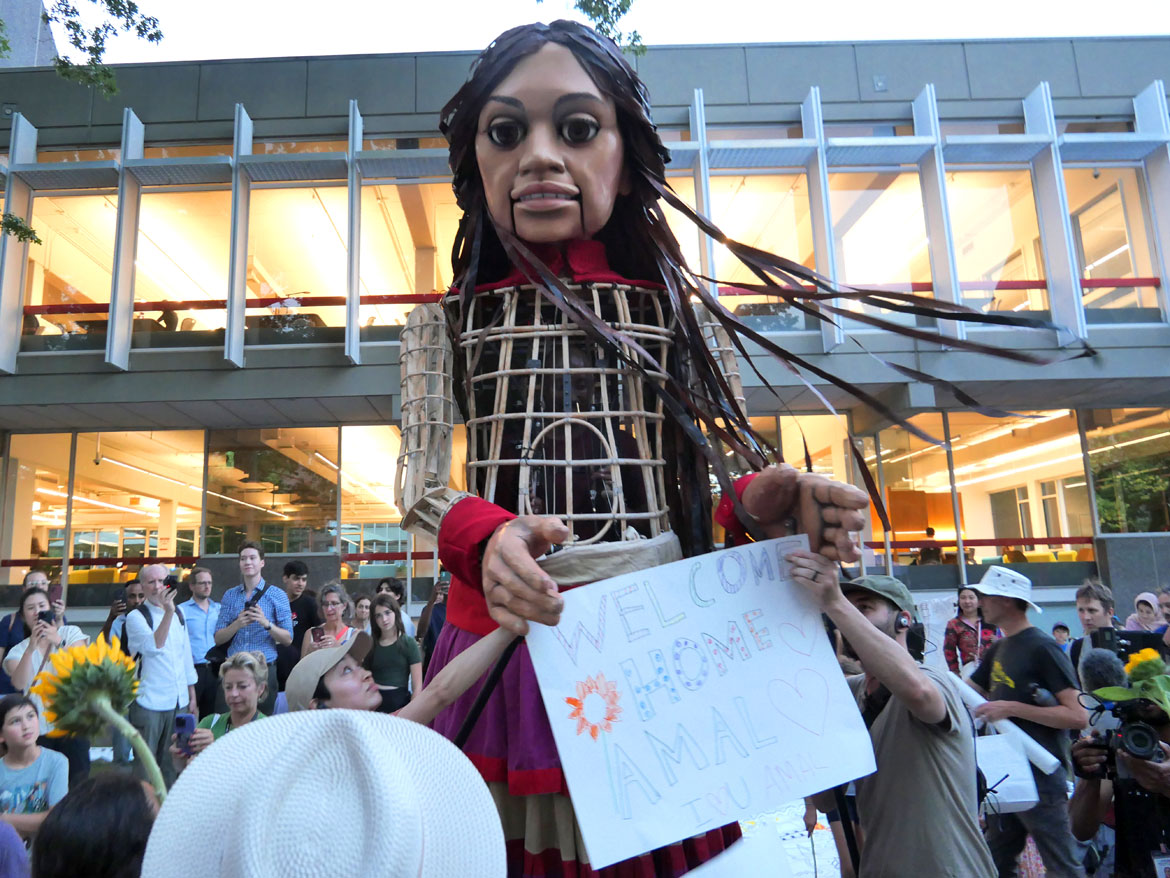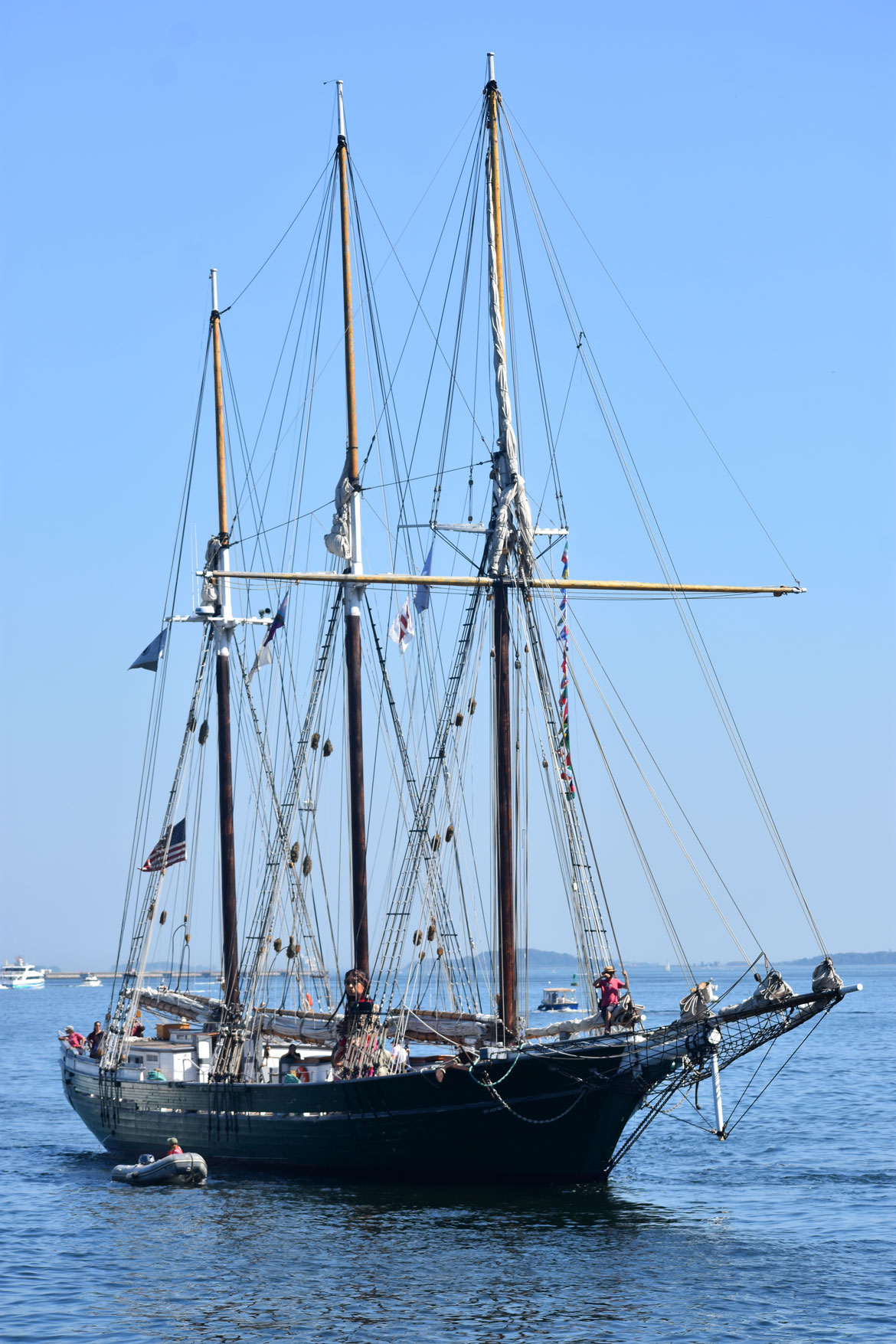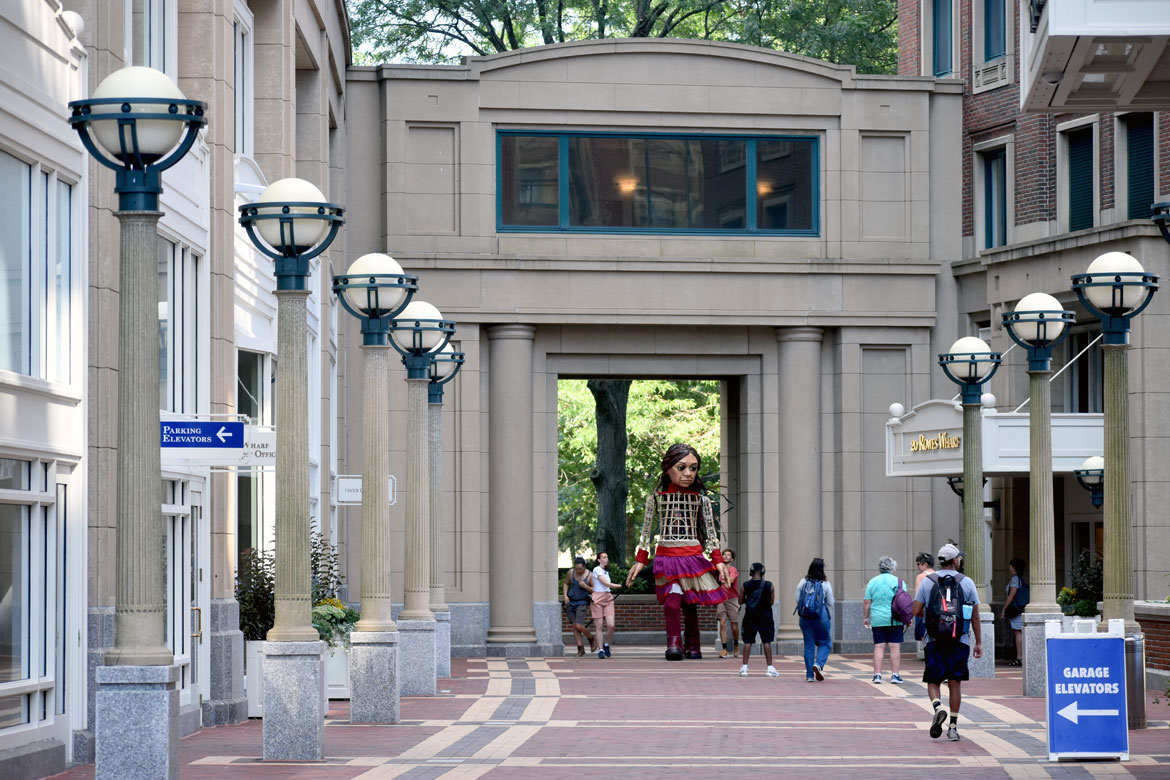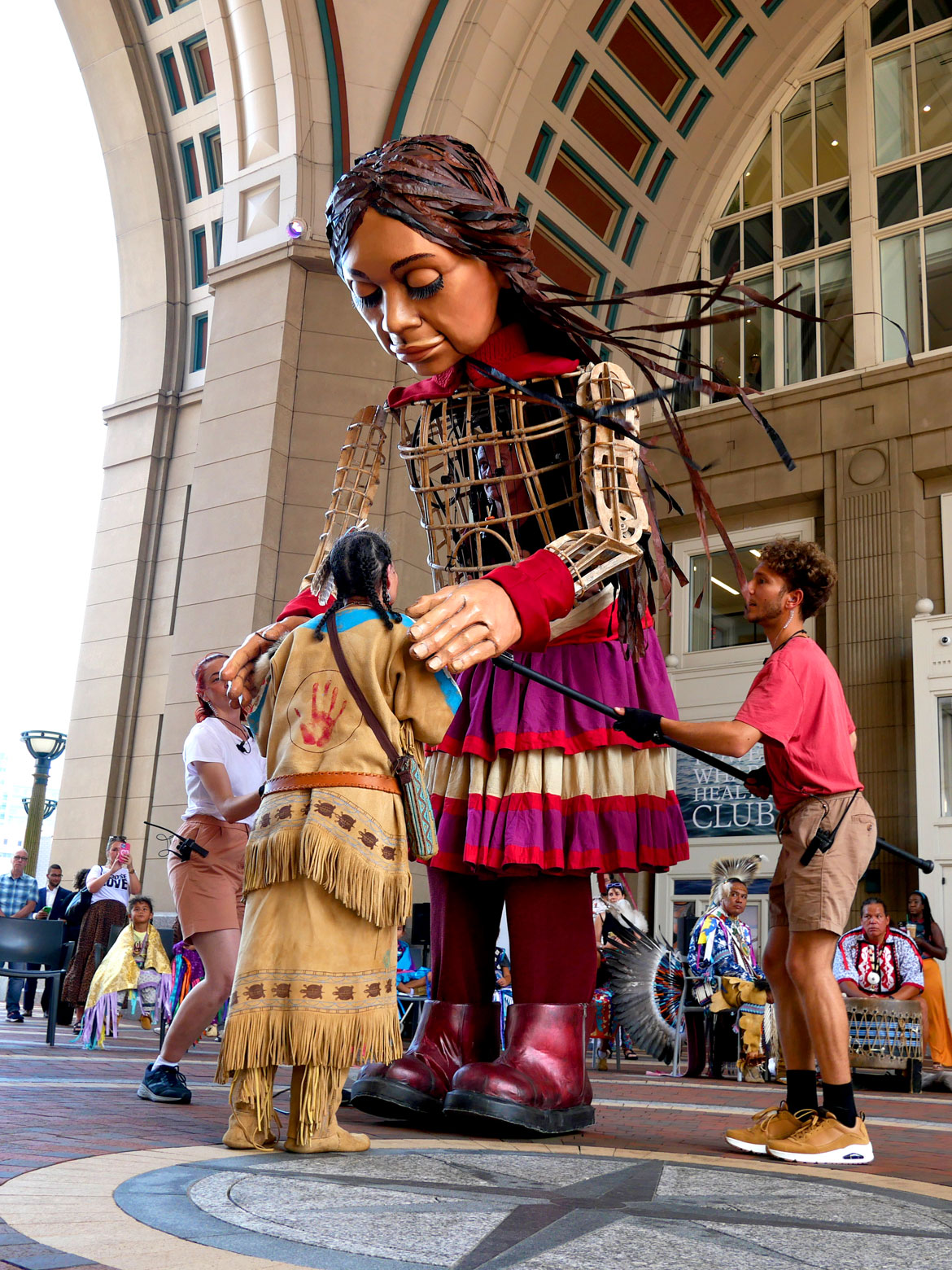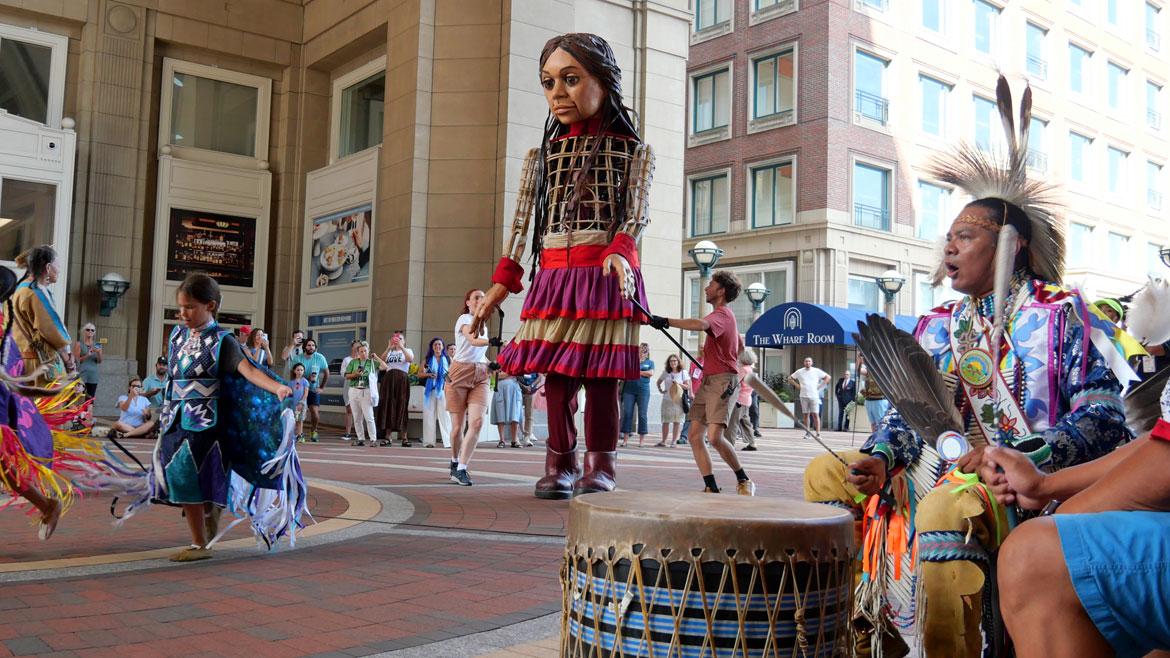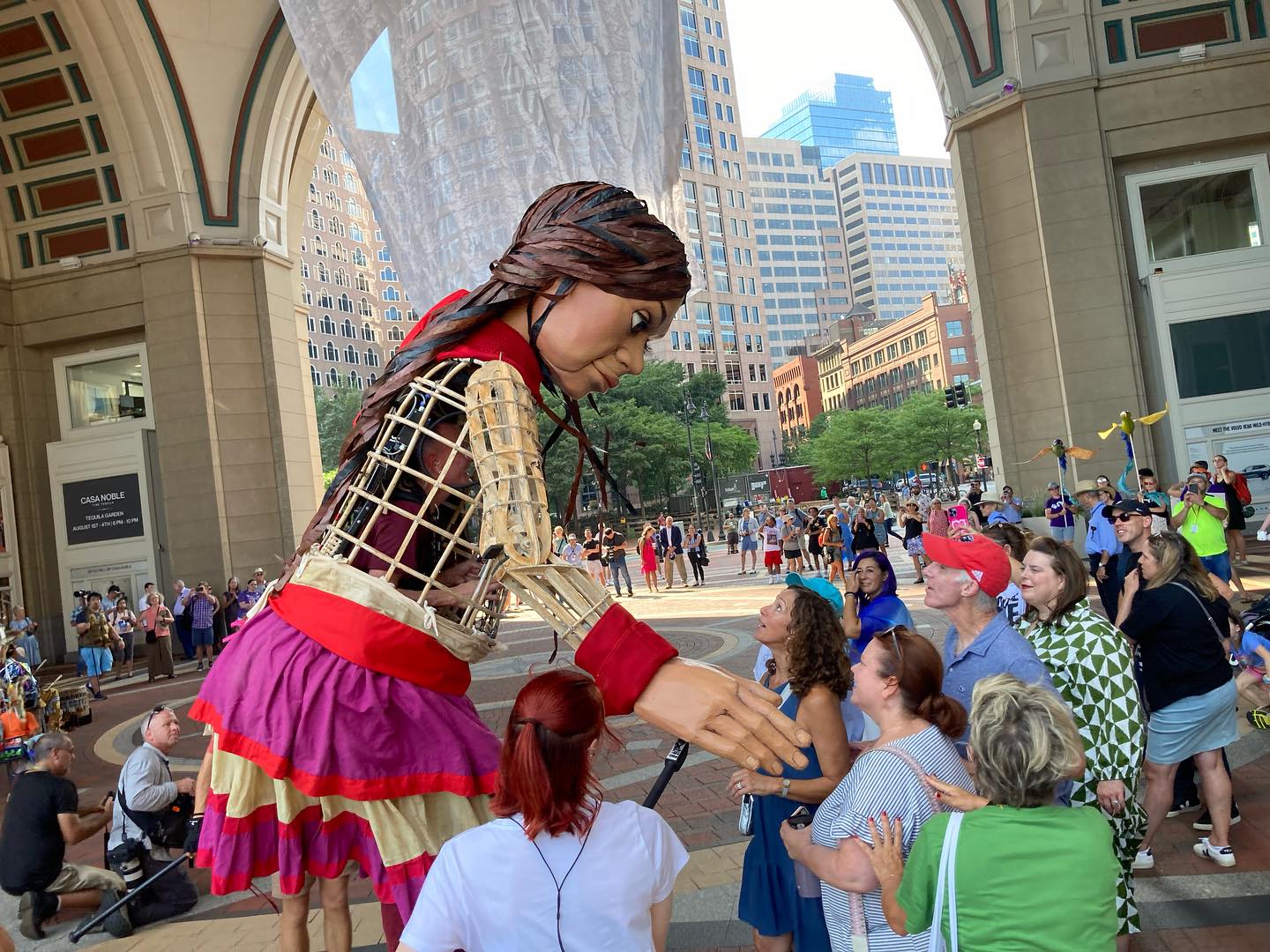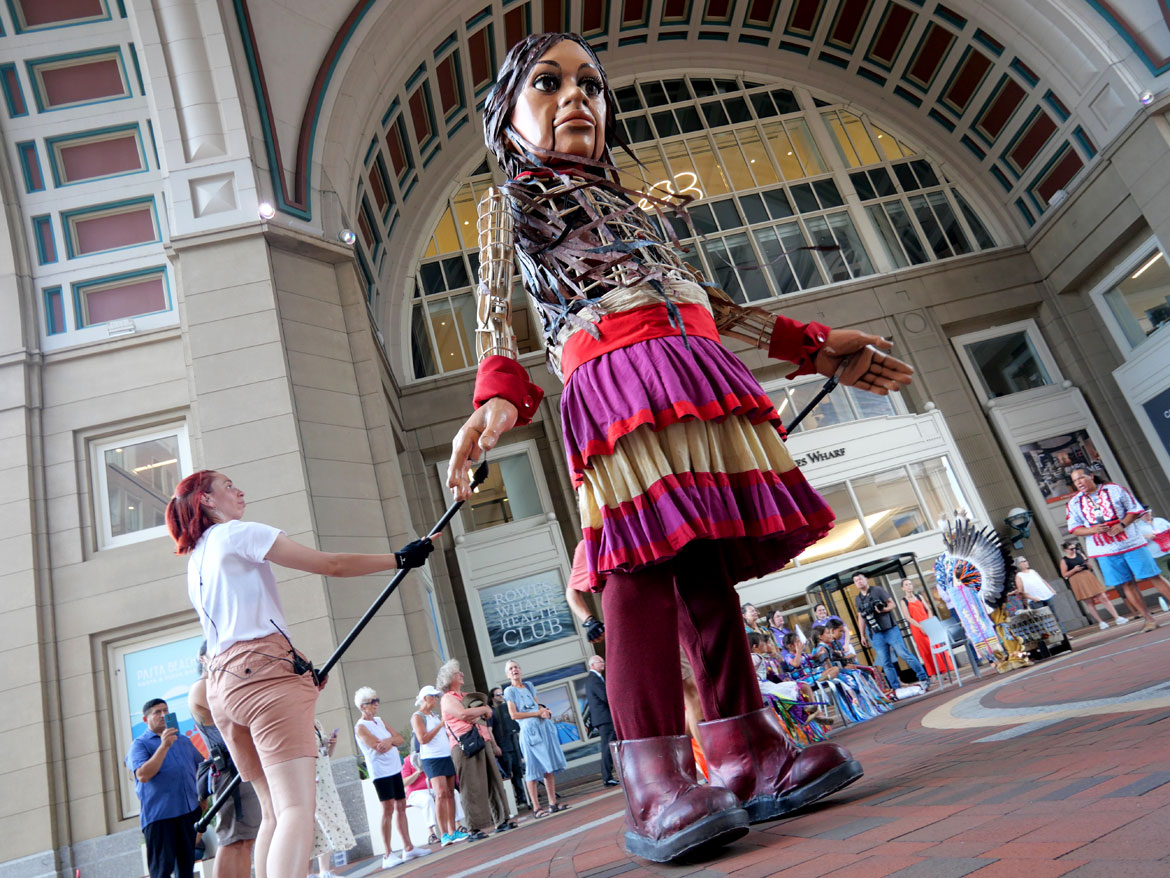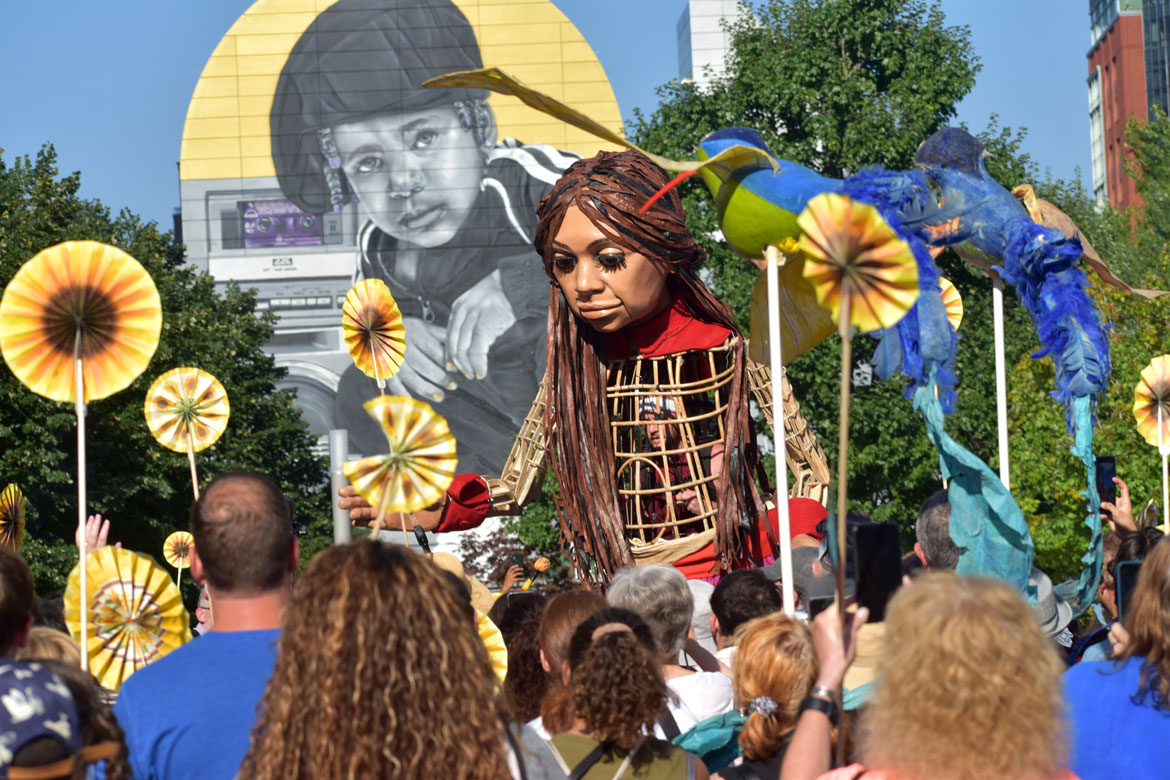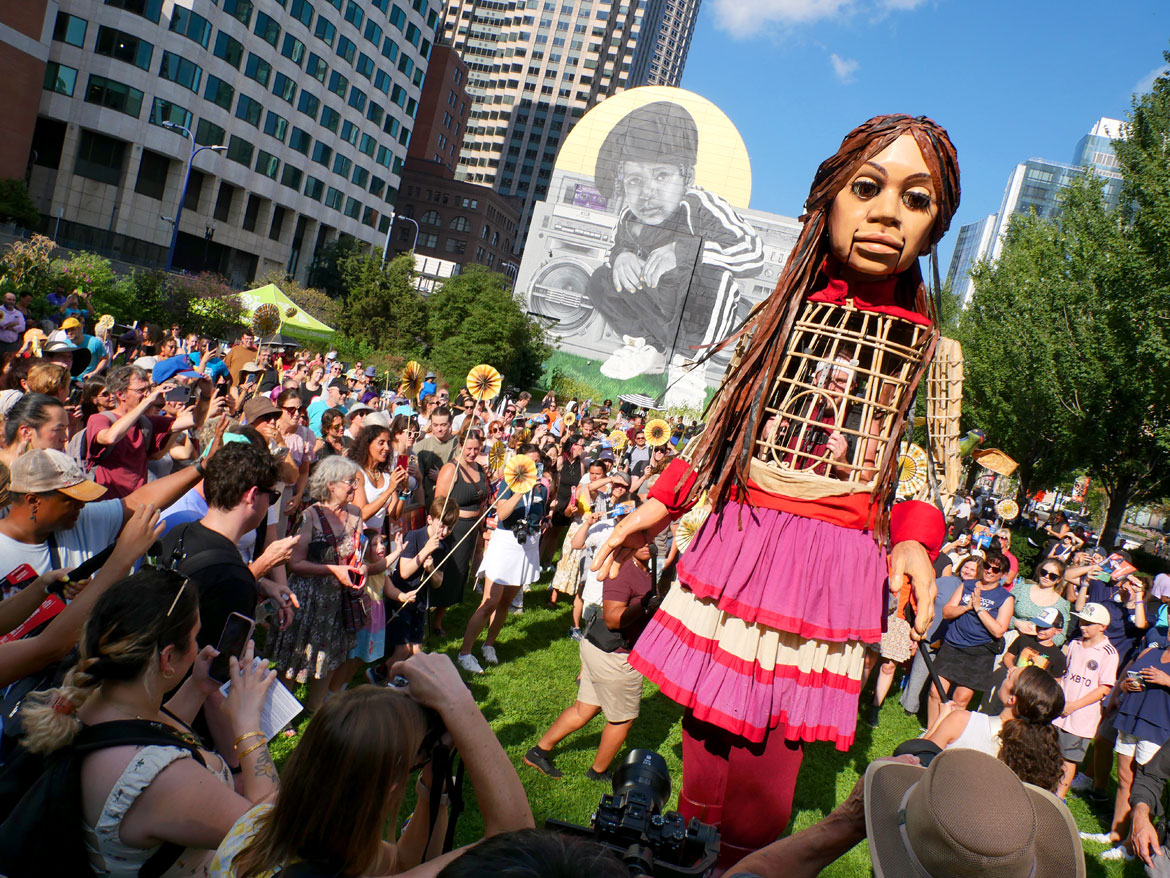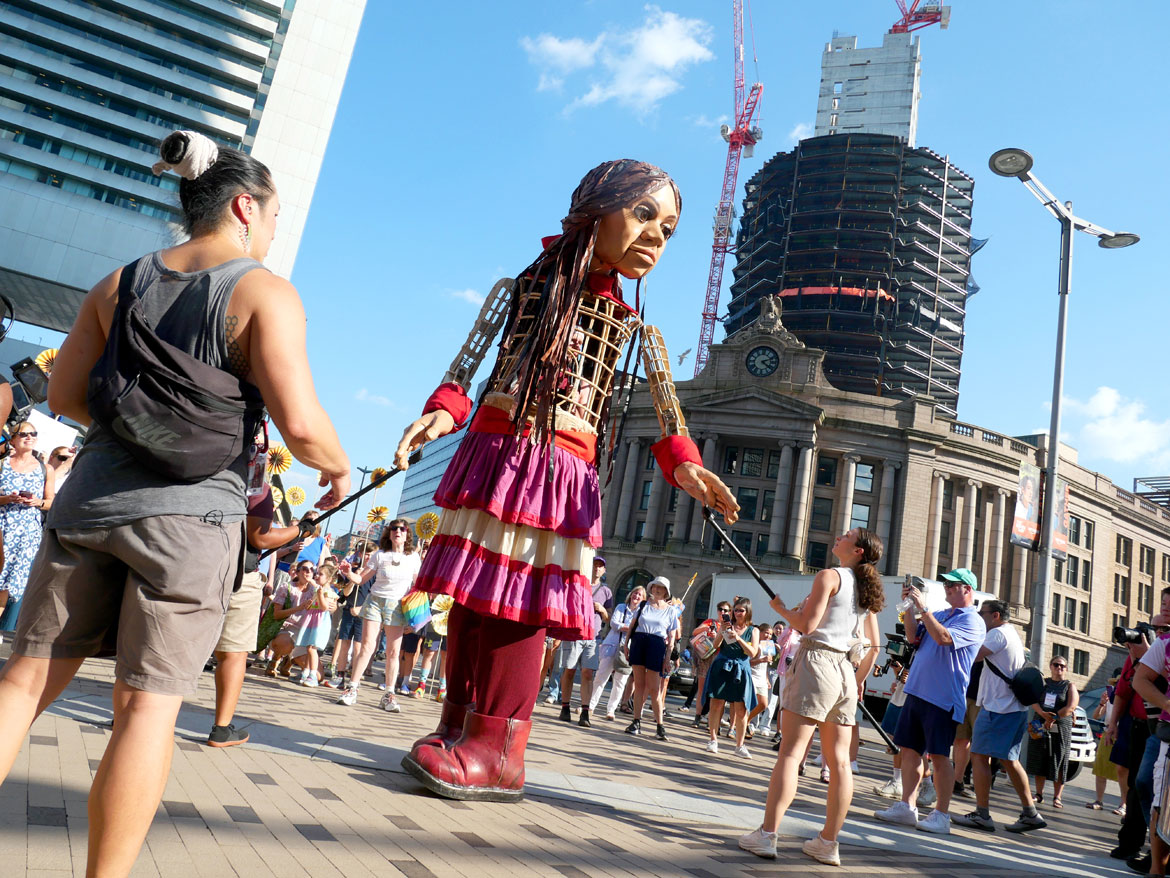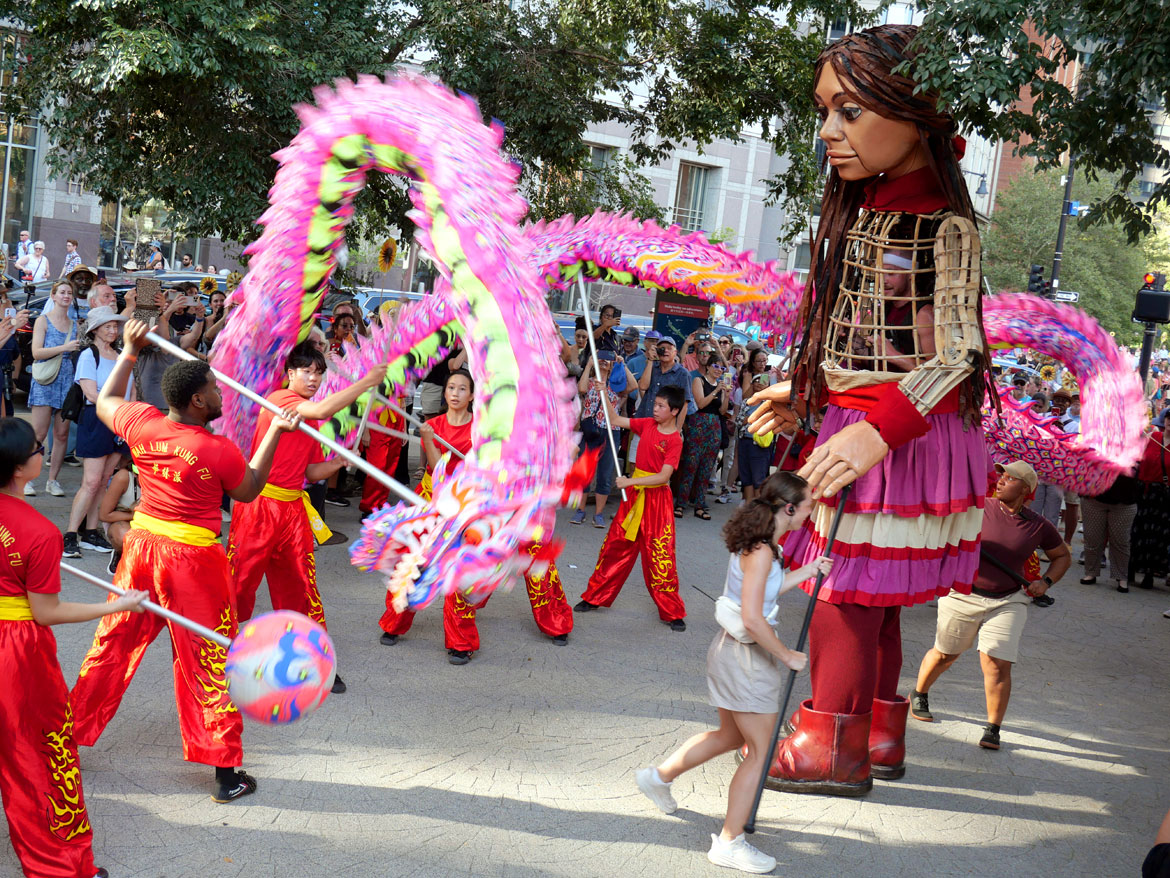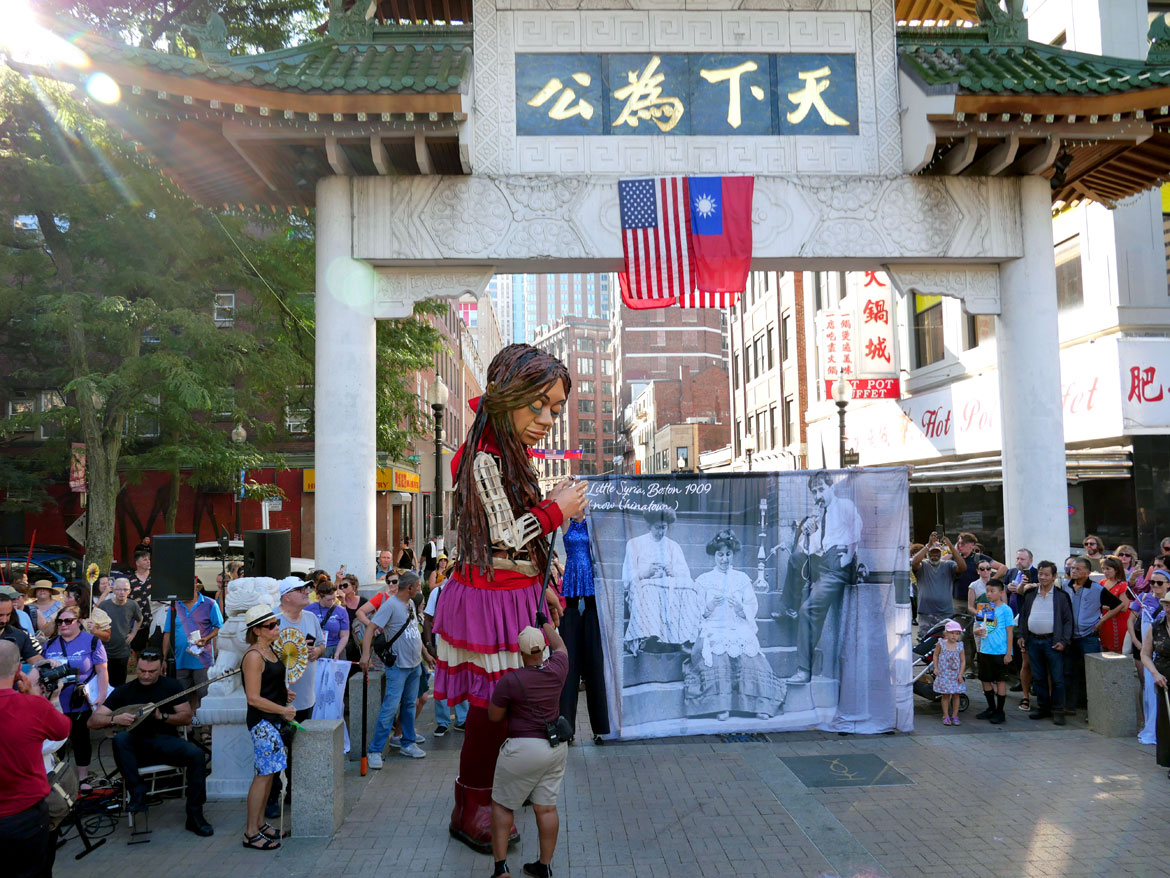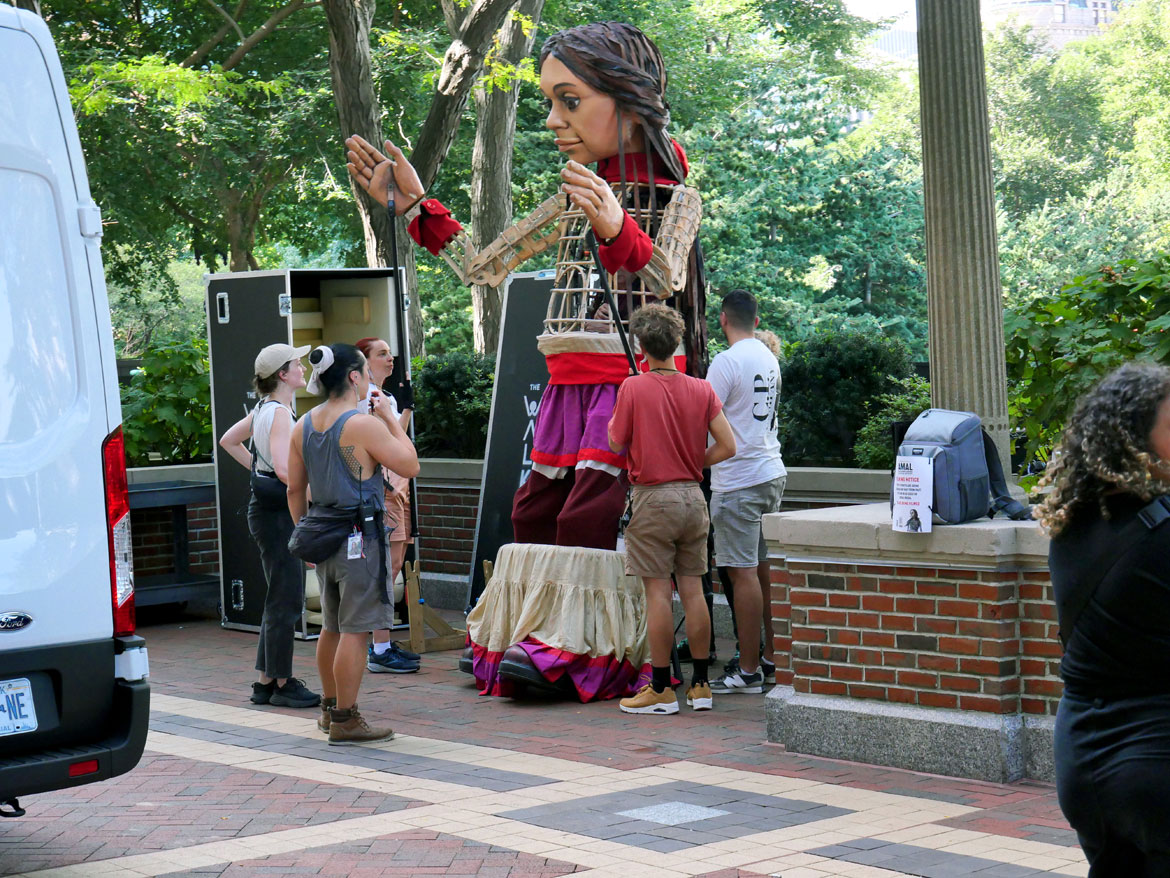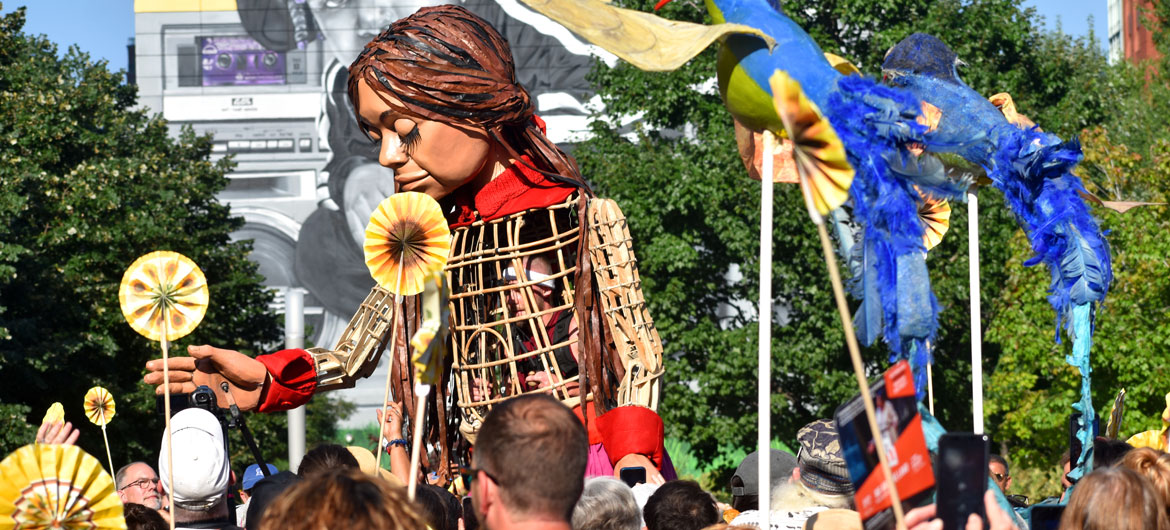Little Amal, the internationally famous 12-foot-tall puppet depicting a 10-year-old Syrian refugee girl, debuted in Boston aboard the three-masted schooner Denis Sullivan that slowly motored towards Rowes Wharf at 2 this afternoon, before turning to land on the other side of the Fort Point Channel at the Courthouse Docks. The puppet soon reappeared at the Rowes Wharf Rotunda for a welcome by indigenous dancers, singers and drummers at the Rowes Wharf Rotunda.
Little Amal (meaning “Hope” in Arabic) originated as a giant puppet 9-year-old, lost and trying to find her mother on a 5,000-mile, $3.8 million trip in 2021, beginning in Turkey, 40 miles from the Syrian border, to Greece to Italy to France to England.
“The Walk” aimed to highlight the plight of Syrian refugees fleeing from the civil war to Europe. It debuted as angry debates over refugees and borders, over migrants and immigrants, over malicious border guards separating tiny children from their parents, roiled Europe and the United States. Some European appearances attracted protests, or were refused permits or banned by local authorities. The puppet made appearances in New York in September 2022.

Beginning with Little Amal’s arrival in Boston, in “Amal Walks Across America,” the puppet is expected to visit more than 35 communities, all the way to San Diego by Nov. 5. Free public events continue in Boston through Sept. 9, then Little Amal travels to Ashfield and North Adams, Massachusetts, on Sept. 10, and Hartford, Connecticut, on Sept. 12. (Full schedule.)
“The story of the United States has been shaped by a complex history of migration and movement that touches every corner of the globe. But the myriad challenges of today’s interconnected world are forcing many to revisit America’s status as the land of opportunity,” The Walk Productions Artistic Director Amir Nizar Zuabi has said. “Our hope for Amal is that she can spur conversations in communities across the country around the important role of refugees and newcomers in writing the ongoing story of the United States.”
Today, Amal then appeared at 4 p.m. at Dewey Square for a procession—joined by Brazilian-style drummers and Chinese dragon and lion dancers—to the Chinatown Gate, where stilters unfurled a banner noting that the neighborhood was known as Little Syria from the late 1800s until the 1950s. As the sun was setting around 7 p.m. Amal appeared at the Harvard Science Center and walked through Harvard Yard.
Little Amal was designed and built by South Africa’s Handspring Puppet Company, who brought to life the puppet horse in the play “War Horse.” Amal, fashioned from cane and carbon fiber, is operated by one person on stilts inside the body, who also controls strings that animate the face, head and eyes, plus two puppeteers following alongside using poles to move the hands. The puppet is surrounded by blockers and people on headphones perhaps directing and ushers and security guards and sometimes police trying to clear a path for the puppet, who keep telling everyone that they must get out of the way.
People flock to Little Amal, they want to get close, they want to follow her, they want to hold her hands, they want to hug her. Little Amal meets people, closes her eyes, bows, clasps hands. Sometimes she holds up a sign someone has given her—“Welcome Home, Amal.”
If this is the kind of coverage of arts, cultures and activisms you appreciate, please support Wonderland by contributing to Wonderland on Patreon. And sign up for our free, occasional newsletter so that you don’t miss any of our reporting. (All content ©Greg Cook 2023 or the respective creators.)
